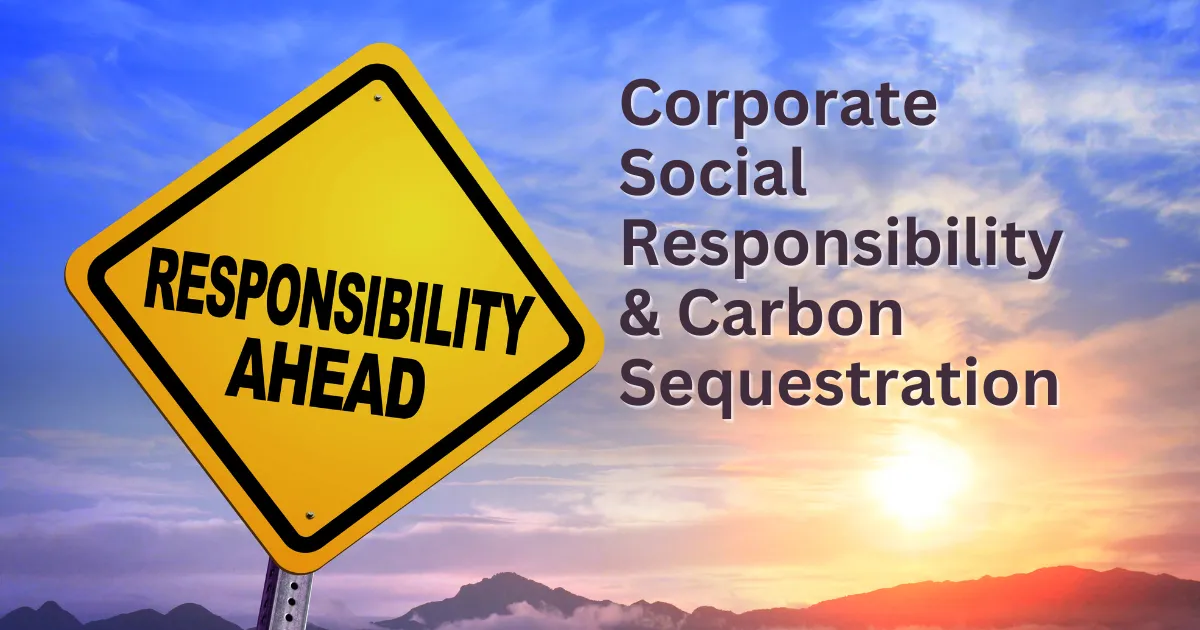In today’s rapidly evolving business environment, corporate social responsibility (CSR) has become a cornerstone for leading enterprises committed to making a positive impact on the world. Increasingly, corporations are being judged not only on their financial performance but also on their ability to address global challenges such as climate change. This is where innovative carbon sequestration solutions come into play, offering companies an effective way to enhance their CSR efforts while actively combating environmental degradation.
Understanding Carbon Sequestration in CSR
Carbon sequestration involves capturing atmospheric carbon dioxide (CO2) and storing it in a way that prevents it from re-entering the atmosphere, thus mitigating global warming. For corporations, integrating carbon sequestration into their CSR strategies can significantly enhance their sustainability credentials and contribute to their long-term business viability.
One of the most effective, yet underutilized, methods of carbon sequestration involves the production and use of biochar. Biochar is produced through the process of pyrolysis, where organic materials are heated in a low-oxygen environment, transforming them into a stable form of carbon that can endure in soil for thousands of years. This method not only captures carbon but also enriches soil fertility, making it a dual-purpose solution for CSR initiatives.
Benefits of Carbon Sequestration for Businesses
Enhanced Brand Image and Competitive Advantage
Implementing carbon sequestration practices can significantly improve a company’s brand image. Businesses that proactively adopt these practices are often viewed as leaders in sustainability, which can enhance customer loyalty and attract environmentally conscious consumers.
Compliance and Market Access
As global regulations on emissions become stricter, companies that pioneer carbon sequestration will likely face fewer regulatory challenges. This proactive approach ensures easier compliance with environmental laws and can open up access to new markets that prioritize sustainability.
Financial Incentives
Investing in carbon sequestration can also lead to financial benefits such as tax breaks, subsidies, and improved market positioning. Moreover, engaging in carbon trading markets allows companies to monetize their carbon reduction efforts by selling certified carbon credits.
Long-term Sustainability and Risk Management
Incorporating carbon sequestration into CSR strategies can help companies mitigate risks associated with climate change and resource scarcity. This forward-thinking approach not only safeguards the environment but also ensures the long-term sustainability of the business.
Implementing Carbon Sequestration in Your CSR Strategy
To effectively integrate carbon sequestration into your corporate social responsibility (CSR) strategy, begin by conducting a comprehensive assessment of your company’s carbon footprint. This step involves identifying major sources of emissions within your operations and strategizing on how to reduce these emissions. Lowering your carbon output not only fulfills a key component of environmental responsibility but also enhances operational efficiency and aligns with global sustainability objectives.
Partnering with Dynamic Carbon Credits
After assessing and reducing your carbon footprint, offsetting the residual emissions becomes essential. Partnering with Dynamic Carbon Credits provides a strategic opportunity to implement a plant-based solution that not only offsets carbon output but also advances broader environmental and social goals. Dynamic Carbon Credits specializes in leveraging plant-based systems, particularly through the creation of biochar, which sequesters carbon and improves soil health.
Dynamic Carbon Credits offers robust Carbon Offset Credits that come with three layers of additionality:
Additionality: The initiatives by Dynamic Carbon Credits surpass conventional practices by introducing innovative methods that capture carbon that would otherwise remain unsequestered. This includes a patented, multi-step process that enhances the overall effectiveness of the sequestration efforts.
Permanence: The use of biochar in their projects ensures a high level of permanence, securely storing captured carbon dioxide for centuries or longer. This long-term sequestration is vital for effective climate change mitigation, ensuring that benefits are sustained over time without reversing the gains made in reducing atmospheric CO2 levels.
Measurability: Dynamic Carbon Credits employs advanced techniques to precisely measure the amount of carbon sequestered, which is then verified by independent third parties. This rigorous measurement and verification process guarantees transparency and provides solid evidence of the impact made on carbon reduction.
Co-Benefits
The carbon sequestration projects facilitated by Dynamic Carbon Credits also deliver significant co-benefits:
– Ecological: These projects contribute to ecological restoration and biodiversity enhancement.
– Agronomical: Improvements in soil health support agricultural productivity and sustainability.
– Social and Economic: The initiatives provide socio-economic advantages to local communities, including job creation and economic stability, which in turn supports community development and resilience.
Strategic Benefits
Partnering with Dynamic Carbon Credits allows your company to not only achieve carbon neutrality but also engage in sustainable development practices that extend beyond simple offsetting. This collaboration enhances your CSR profile, positioning your company as a sustainability leader while aligning with consumer expectations for corporate environmental responsibility. Through this partnership, your company can demonstrate a genuine commitment to impactful environmental stewardship and community engagement.
Engaging in these practices provides not only environmental benefits but also significant competitive advantages, reinforcing the company’s reputation and potentially qualifying for financial incentives like the full 45Q tax benefits due to the measurable and permanent nature of the carbon sequestration achieved.





